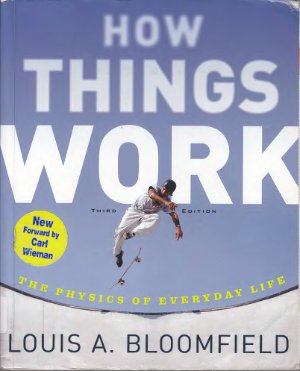Wiley, 3 edition 2006, 576 Pages
This book is an unconventional introduction to physics and science that starts with whole objects and looks inside them to see what makes them work. It's written for students who seek a connection between science and the world in which they live. How Things Work brings science to the reader rather than the reverse. Like the course in which it developed, this book has always been for nonscientists and is written with their interests in mind. Nonetheless, it has attracted students from the sciences, engineering, architecture, and other technical fields who wish to put scientific concepts into context.
This book is written in English and organized in a case-study fashion. It conveys an understanding and appreciation for physics by finding physics concepts and principles within the familiar objects of everyday experience. Because its structure is defined by real-life examples, this book necessarily discusses concepts as they're needed and then revisits them later on when they reappear in other objects.
This book is an unconventional introduction to physics and science that starts with whole objects and looks inside them to see what makes them work. It's written for students who seek a connection between science and the world in which they live. How Things Work brings science to the reader rather than the reverse. Like the course in which it developed, this book has always been for nonscientists and is written with their interests in mind. Nonetheless, it has attracted students from the sciences, engineering, architecture, and other technical fields who wish to put scientific concepts into context.
This book is written in English and organized in a case-study fashion. It conveys an understanding and appreciation for physics by finding physics concepts and principles within the familiar objects of everyday experience. Because its structure is defined by real-life examples, this book necessarily discusses concepts as they're needed and then revisits them later on when they reappear in other objects.

